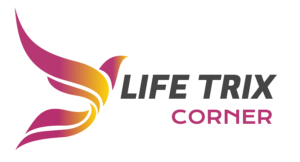Professional services firms—law practices, accounting firms, consultancies, and financial advisors—run on information. Client data, intellectual property, and operational insights form the lifeblood of these businesses. Yet many firms remain surprisingly vulnerable to IT risks that could devastate their reputation overnight.
“Most professional services leaders I talk with still view IT as a necessary expense rather than a strategic asset,” notes tech consultant Mira Patel. “That mindset creates dangerous blind spots.”
Let’s pull back the curtain on the IT risks lurking beneath the surface of professional services firms and explore practical solutions before these hidden dangers emerge.
The Unique IT Vulnerability Landscape for Professional Services
Professional services organizations face distinct technological challenges:
1. Data Sensitivity Magnified
Professional services firms handle exceptionally sensitive client information—financial records, legal strategies, personal data, and trade secrets. A single breach can trigger:
- Immediate client trust erosion
- Regulatory penalties and reporting requirements
- Malpractice claims and litigation
- Permanent reputational damage
“The fallout from IT failures in professional services is particularly harsh because clients expect perfect discretion,” explains cybersecurity expert Alan Wong. “When you’re handling someone’s financial future or legal defense, there’s zero tolerance for mistakes.”
2. Distributed Work Reality
The modern professional services landscape features:
- Remote client meetings
- Work-from-anywhere talent models
- Cross-border collaboration
- Client expectations for 24/7 availability
These operational patterns create countless potential failure points across devices, networks, and access scenarios that traditional IT approaches struggle to secure.
3. Productivity vs. Security Tensions
Professionals generating billable hours resist security measures perceived as burdensome. IT solutions for professional services must navigate this fundamental tension—providing robust protection without creating friction that hampers productivity.
Beyond the Obvious: Overlooked IT Risks
While most firms worry about hackers and malware, several less-discussed IT risks pose equal or greater threats:
Shadow IT Proliferation
When official systems feel cumbersome, professionals frequently adopt unauthorized tools. This “shadow IT” phenomenon—using unapproved file-sharing platforms, communication apps, or productivity tools—creates serious vulnerabilities IT departments cannot monitor or secure.
Insider Threats
Staff departures represent a significant risk vector, especially when professionals leave to join competitors. Without proper systems:
- Client information walks out the door
- Intellectual property transfers to competitors
- Access credentials remain active long after departure
Business Continuity Gaps
Many professional services firms maintain inadequate recovery capabilities for their most critical systems. The assumption that “it won’t happen to us” leaves them vulnerable to extended downtime scenarios from:
- Ransomware attacks
- System failures
- Natural disasters
- Supply chain disruptions
Strategic IT Solutions for Professional Services
Addressing these challenges requires a strategic approach that balances security, usability, and budget considerations:
1. Zero-Trust Architecture Implementation
Rather than assuming everything inside the corporate network is safe, zero-trust models verify every access request regardless of source. This approach:
- Limits access to specific resources needed for each role
- Requires continuous authentication
- Minimizes damage from compromised accounts
- Works seamlessly across office and remote contexts
2. Client-Centric Data Governance
Effective data governance in professional services must organize around client relationships rather than departmental silos. This means:
- Mapping all data assets by client
- Implementing client-specific retention policies
- Creating visibility into who accesses client information
- Enabling secure client collaboration spaces
3. Frictionless Security
The most effective IT solutions for professional services blend security into workflows rather than disrupting them. Examples include:
- Single sign-on systems that strengthen security while reducing login friction
- Email security tools that quietly scan for threats without delaying communications
- Automated compliance monitoring that runs in the background
- Endpoint protection that doesn’t slow device performance
4. Embedded Resilience
Forward-thinking firms build recovery capabilities directly into their core systems rather than treating business continuity as a separate function:
- Automated backup verification
- Regular recovery testing
- Distributed system architecture
- Redundant communication channels
Making the Transition: Practical Next Steps
Transforming your IT approach doesn’t happen overnight, but these starting points deliver immediate risk reduction:
- Conduct a risk-focused IT assessment specifically examining client data flows, access patterns, and recovery capabilities
- Develop a security awareness program tailored to professional services workflows
- Evaluate cloud solutions designed specifically for your professional domain
- Implement multi-factor authentication across all systems containing client information
- Review and strengthen vendor contracts to ensure appropriate security provisions
The Competitive Advantage of Strategic IT
While risk mitigation drives many IT investments, firms implementing comprehensive IT solutions for professional services discover unexpected competitive benefits:
- Enhanced client trust through demonstrable security measures
- Improved talent retention by enabling flexible work models
- Faster service delivery through streamlined digital workflows
- More strategic resource allocation by reducing fire-fighting
“The firms pulling ahead aren’t necessarily spending more on technology,” observes digital transformation consultant Jamie Rivera. “They’re thinking differently about it—viewing IT as a strategic enabler rather than a cost center.”
For professional services organizations navigating complex client expectations, regulatory requirements, and competitive pressures, this strategic approach to IT transforms hidden risks into visible opportunities—creating resilience that supports sustainable growth in an increasingly digital landscape.















